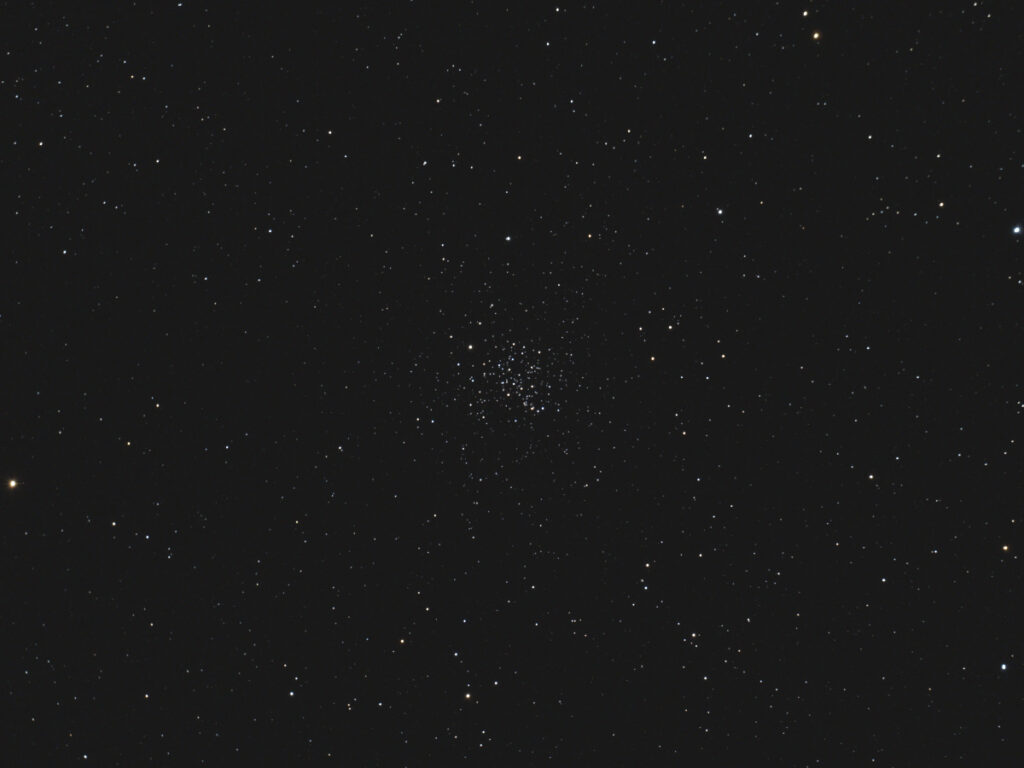
Telescope: ES Comet Hunter MN6 at f/4.8, Orion Atlas EQ-G
Camera: Baader modified Nikon 610
Filter: High Point 2” IR Blocking Filter
Guide scope: Williams Optics 50mm, ASI290MM mini, PHD2
Exposure: 13x60sec, Gain 200, saved as RAW
Darks: Internal (Long Exposure Noise Reduction On)
Flats: 32×1/4sec, tee shirt flats taken at dusk
Average Light Pollution: Red zone, Bortle 8, poor transparency
Lensed Sky Quality Meter: 18.2 mag/arc-sec^2
Stacking: Mean with a 2-sigma clip.
White Balance: Nebulosity Automatic
Software: Backyard Nikon, Nebulosity, Deep Sky Stacker, Photoshop
M67 is one of my favorite modest open clusters. It is located off to the east of the much larger and brighter M44 (The Beehive) and it is a bit harder to find, but worth the effort. M67 is very old for an open cluster with an estimated age of about 4 billion years. The stars in an open cluster are usually only weakly bound to the group and they slowly scatter as the cluster orbits the galaxy.
High in the southwest this time of year, M67 makes a fine target for modest telescopes and blossoms into a fine patch of stardust in large telescopes.









Recent Comments